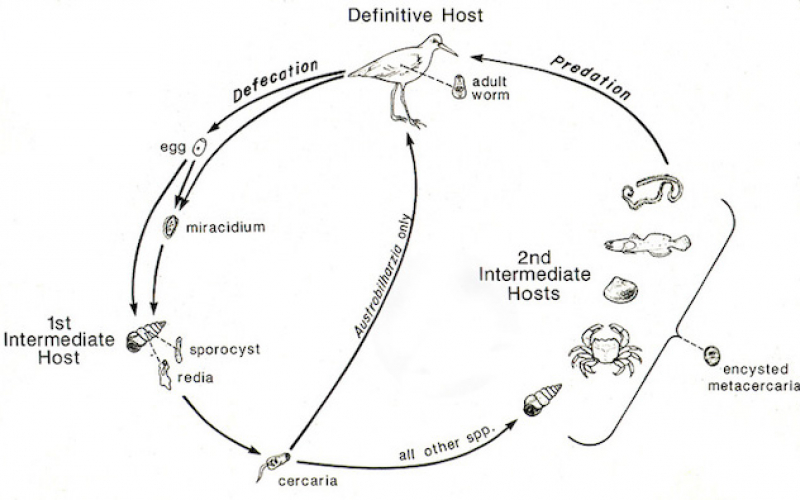Due to limited NSF funding for nearshore marine research in the 1980’s, I started looking landward for new study systems. Margaret Race, a Zoology PhD student of Professor Rob Colwell, was studying interactions between the native California marsh snail, Cerithidea (now Cerithideopsis) californica and Illyanassa obsoleta, an introduced Atlantic mud snail, in San Francisco Bay marshes. I visited Margaret’s study sites and noticed that Cerithidea populations were largely restricted to open clearings in the marsh cover (pannes) that retained a shallow pool of water at low tide. The snails reproduce in these pools and because the species is a direct-developer with crawl-away recruits the populations are inherently isolated to varying degrees from neighboring populations. Sampling showed that the age/size-structure of these populations differed over short distances, reflecting asynchronous patterns of local reproduction. Metapopulation theory was burgeoning at the time, so I set out to test some of that theory with this system. I compared the SF Bay populations with those in Bolinas Lagoon in Marin Co, CA, which I envisioned as occupying a more homogeneous mudflat habitat, with higher rates of adult migration among local populations and therefore, less “population structure.” This expected difference in population structure turned out not to be the case; Bolinas snail populations were also distributed as numerous subpopulations in marsh pannes and in shallow pools at the mudflat/marsh ecotone. As in the SF Bay marshes, these subpopulations often exhibit distinct demographic dynamics and age/size-structure. What was different about the Bolinas Lagoon populations was the high rate of snail infection by a diverse assemblage of digenetic trematode parasites (~16 spp.) that exploit Cerithidea as first intermediate host in their life cycles. These larval trematode infections castrate the host snail, potentially affecting the density of its populations. Surprisingly, given the diverse assemblage of trematode parasites that can infect the snail, mixed-species infections are much less common that expected by chance. Direct observations and a field mark-recapture study confirmed that strong, hierarchical antagonism between the larvae of different trematode species prevent coexistence within the same host. Over about a 10-year period, I conducted a variety of experimental and observational studies that addressed two major questions: (1) do parasites limit or regulate host population size? and (2) how are multiple species of competing parasites able to coexist within the same host population?
California horn snail, Cerithideopsis (Cerithidea) californica in Bolinas Lagoon, Marin Co., CA






